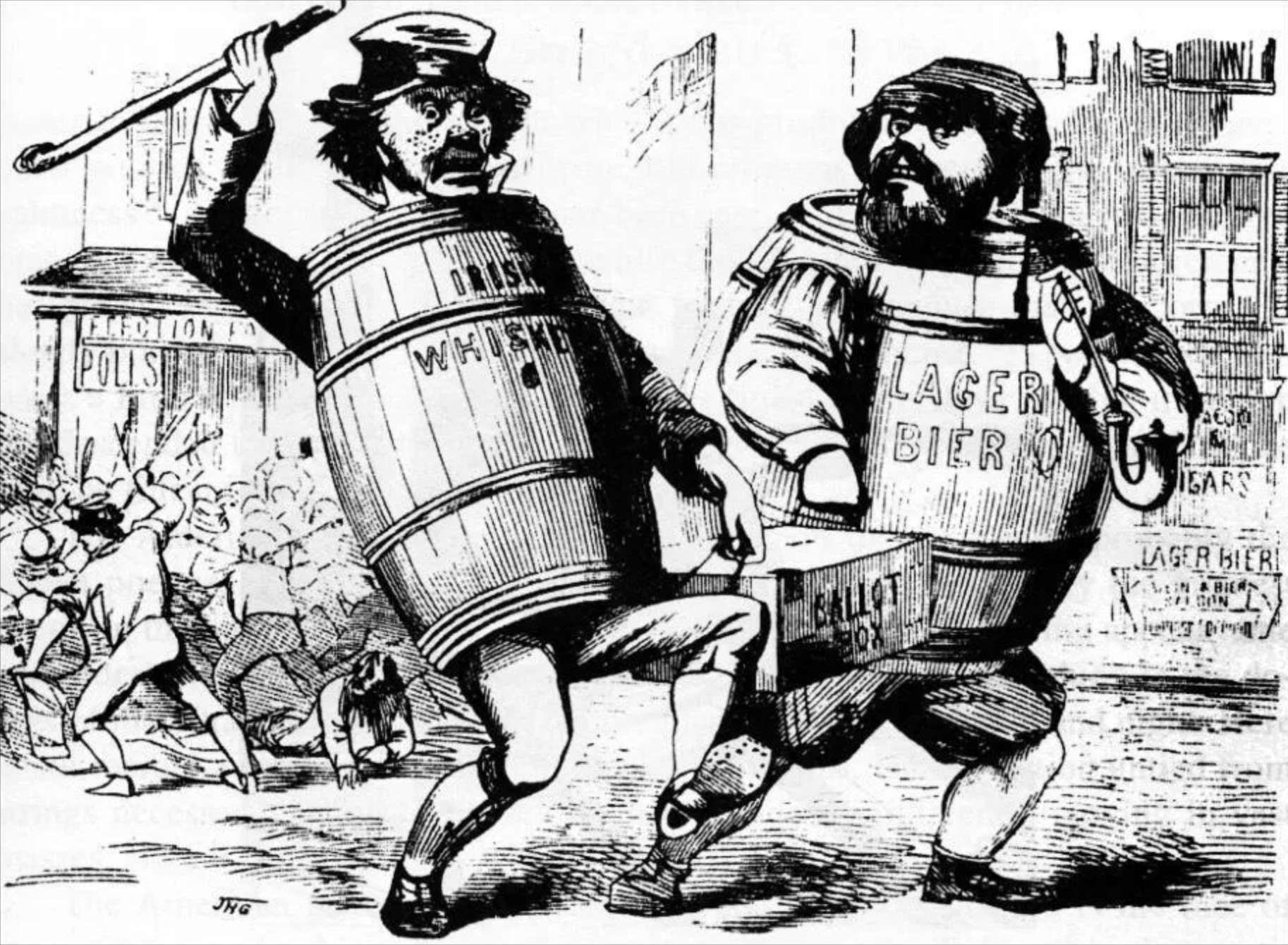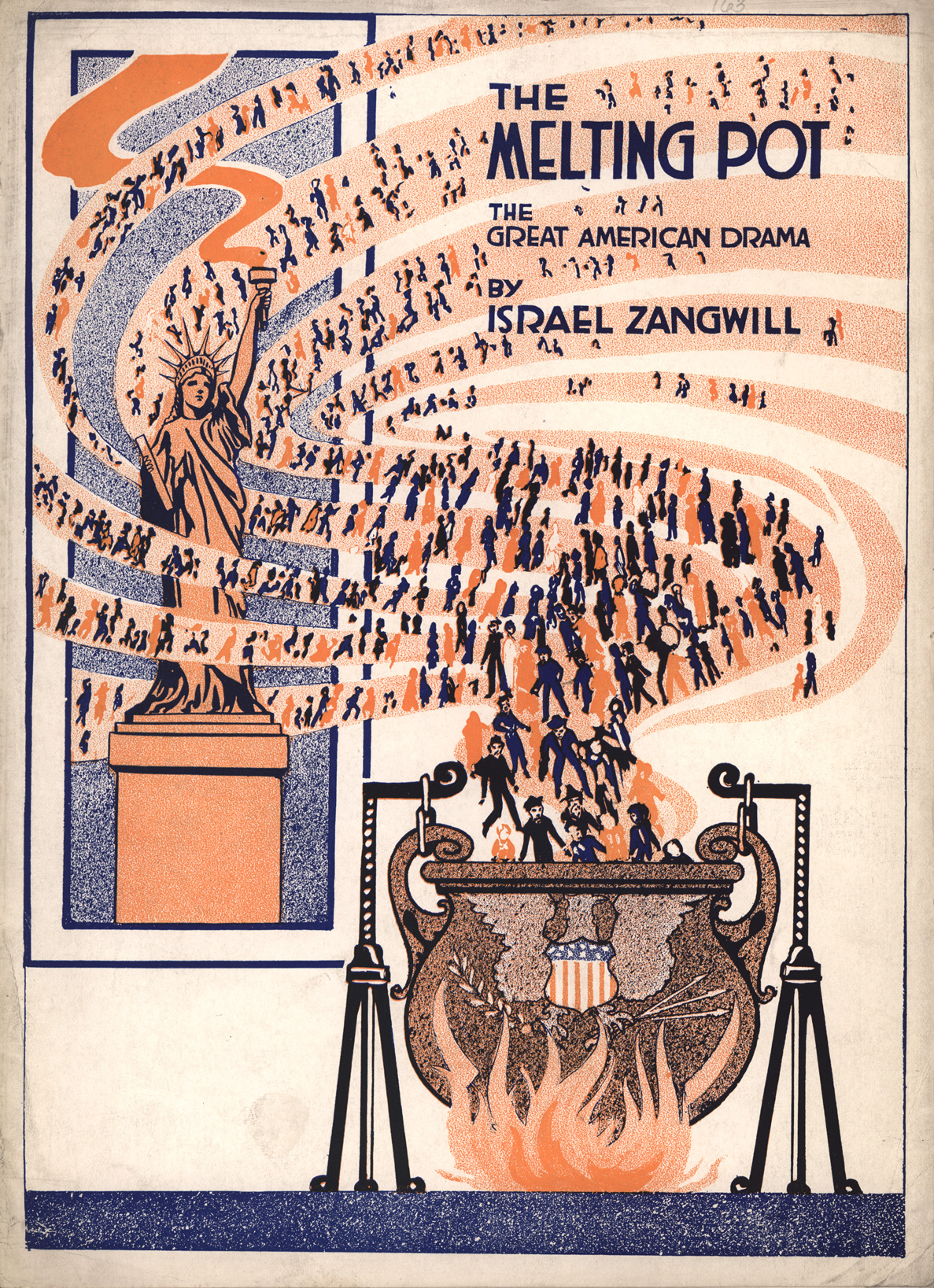Blog #166 – Final Exam – Immigration and Assimilation Theories
As more and more immigrants come to America, it’s worth looking at three different theories as to what immigrants are / were expected to do when they come here. The majority of this article comes from “Assimilation in America” by Milton M. Gordon, 1961.
The first wave of immigrants came between 1620 – 1775. This group is predominantly English, with some Scots-Irish, Germans, Swedes, and French and Dutch. About 20% of the American population was Africans who were forcibly brought here or descendants of enslaved Africans.
The second wave arrived between 1840s and 1850s and were predominantly Irish, German Catholics, Chinese, and Scandinavians. This group has been called the “old immigrants” when talking about 19th Century immigration.
The third wave of immigration hit American shores between 1870 – 1924. The earliest group comprised Chinese, French Canadians, Irish, German, Dutch and other northern and western European immigrants. However, after 1890, the newer arrivals came from southern and eastern Europe: Italians, Poles, Russians, Jews, and Slavs and on the West Coast, the Japanese. This group has been called the “new immigrants.” The wave was brought to an abrupt halt by the National Origins Act of 1924.
The latest wave started in the 1960s and hasn’t stopped. Initially, people came from Asia and Eastern Europe, but for the past twenty years or so, more Latin Americans have arrived. Unfortunately, like the previous two waves, there also been an uptick in nativist rhetoric, actions, laws, and sentiments in the past 15-20 years. And like in past waves, immigrants, legal and undocumented, have become scapegoats for the nation’s problems and used as a political tool against their oppponents. For instance, in this ad for the U.S. Senate, one Republican goes after another for not being tough enough on immigration: https://x.com/SandyPensler/status/1003758667806715905?s=20

Anglo-Conformity (Superiority?)
This theory concerns itself with the adoption of Anglo-American institutions like the English language, culture and customs. However, negative attitudes towards other ethnic groups have often come hand in hand with this theory, including the belief that Anglo-American ways are the only way to assimilate and are superior to other cultures. Ben Franklin and other founding fathers expressed “reservations about large-scale immigration from Europe” though they most likely could not have envisioned the role immigration would have on American history. During the second and third waves, nativist attitudes reared their ugly heads at the Irish and Germans (see cartoon) including a violent anti-Catholic campaign. Even the cranky John Quincy Adams basically said, “if they don’t like it here, they can go back where they came from.” When the third wave arrived, Social Darwinism arose as a way of asserting the older groups’ inherent genetic dominance over the eastern and southern European and Asian groups. They weren’t English, had strange religions and customs, and were very slow, if not reluctant, to adopt American ways. There was a pressure-cooker Americanization process undertaken during World War I which ended with hundreds being deported during the “Red Scare” of 1919-20 for un-American ideas like anarchism and socialism. Also near the end of the 3rd wave, the Klan came back like a dreaded disease and expanded its hatred of anyone not WASP (white, Anglo-Saxon, Protestant), and promoted itself as the party of pure Americanism.
Melting Pot
We read about this melding of European people in America in the pre-Revolutionary era in Hector St. John Crevecouer’s Letters from an American Farmer when he said, “Who is this American? He is either an European, or the descendant of an European, hence that strange mixture of blood, which you will find in no other country.” The attitude concerning the new American society was “not a slightly modified English but rather a totally new blend… in which the stocks and folkways of Europe….were mixed in a pot of the emerging nation and fused by the fires of American influence and interaction…” Ralph Waldo Emerson talked about America in the 1840s as “an asylum for all nations” that would make a new type of individual. Frederick Jackson Turner broke with the Anglo-conformity mold when he wrote his historic essay in 1893, “The Significance of the Frontier in American History,” saying that American institutions and democracy were not an offshoot of Europe but something uniquely itself. In 1908, an English-Jewish writer named Israel Zangwill  wrote a drama called (oddly enough) The Melting Pot in which a young Jewish immigrant / composer comes to America in order to complete a symphony about his amazing new country where all ethnic groups are united.
wrote a drama called (oddly enough) The Melting Pot in which a young Jewish immigrant / composer comes to America in order to complete a symphony about his amazing new country where all ethnic groups are united.
Cultural Pluralism
This theory recognizes the concept that when new immigrant groups come to the United States (or wherever, for that matter), the groups tend to clump together in similar groups based on language, culture, and region. For instance, in the 1840s, the Irish bonded together in Boston as American society initially rejected them. By the late 1800s, middle class reformers came to the city to help the new arrivals from eastern and southern Europe get acclimated to America. Women like Jane Addams respected an ethnic group’s language and culture but also taught them the English language. The children of the new immigrants, because of rapid Americanization, looked down upon their parents who couldn’t speak English and clung to the old ways, thereby alienating each generation from the other. But Jane Addams, reflected in her biography, Twenty Years in Hull House, that by creating a “Labor Museum” at her settlement house, she showed the younger generation of immigrants what the older group prized (like sewing and weaving). “The daughters…began to appreciate the fact that their mothers had their own culture too.”
In 1915, Horace Kallen wrote articles on immigration in The Nation which rejected both the melting pot and Anglo-conformity “as models of what was actually transpiring in American life.” He pointed out how the immigrants have participated in American society by learning English but while still preserving their culture and traditions. Kallen felt that by allowing immigrants to keep their culture and traditions, we were actually being more democratic than if we had imposed an Anglo-conformist attitude on them. Kallen came up with the term “cultural pluralism” in later essays in which he rejected the Klan, the Red Scare and other attempts at ultra-Americanization and stated that cultural pluralism was the “cure for these ills.”

As you’ve grown up, you’ve probably come to realize that America is a land of immigrants; you may be the first generation of your family born here in the United States. In this blog response, describe at least two examples of where you’ve seen or experienced at least two of these three immigration theories in action. Talk to your family and ask older relatives about what kinds of stories have been told about the history of your family. If applicable, please include your own family’s stories in your response.



